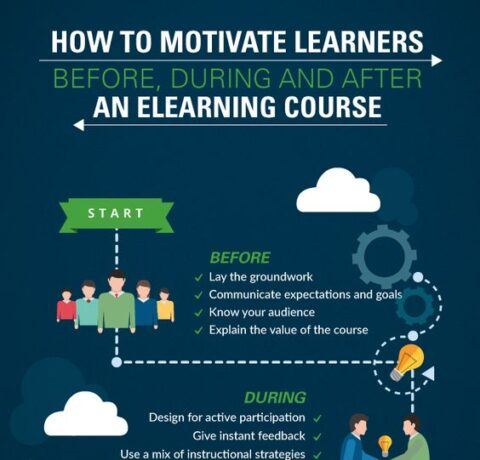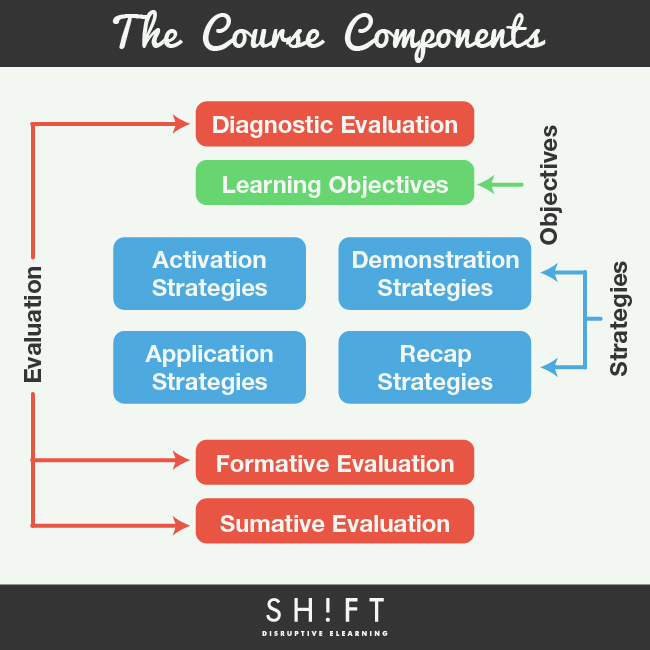5 eLearning Course Components Infographic
1. Diagnostic Evaluation
Include a diagnostic evaluation at the beginning of the course. This will enable the learner to recognize or blend in prior knowledge they have about the main topic. You may present the evaluation as a test or by including a problem-based situation along with some questions.
2. Learning Objectives
The learning objectives are the WHAT and WHY of the eLearning course; are the compass that directs the learning process. Once these are defined, you can plan for the contents, strategies and the evaluation forms. In other words, determining learning objectives will help you determine what to include (or exclude) in a course.
3. Teaching and Learning Strategies.
If the objectives are the why and what of a course, the teaching-learning strategies define HOW we are going to deliver these objectives.
- Activation Strategies
It takes time to prepare students for a new set of information. Therefore, it is important to start each section by activating prior knowledge. Allow learners to connect previous experiences with that they’re currently learning. - Demonstration Strategies
So many eLearning courses are “tell tell tell”, and don’t really show learners what to do. For effective instruction, don’t just tell learners how to do it, prove them how it’s done. Illustrate the information to learn in a clear and simple way, and organized to facilitate understanding. Scenarios, system simulations and role playing scenarios are forms of discovery activities that help tangibly illustrate to students the information. - Application Strategies
Demonstration and application works hand in hand. Show students how to apply new information is a good start. But you have to allow them to apply it on their own. Let them practice and learn from their mistakes. - Recap Strategies
Finally, it is important to display the most relevant aspects of the topic just seen. Using summaries and knowledge checks are common recapitulation strategies, although schemes, concept maps and infographics can also be used.
4. Formative Evaluation
Formative evaluations will allow learners to review what is being learned and receive feedback about their progress. Feedback is crucial in motivating learners and ensuring the efficiency of their learning process. When provided with feedback, learners usually try to correct mistakes and eliminate errors accordingly.
5. Summative Evaluation
Include a Summative Evaluation at the end of the course to quantitatively and qualitatively verify compliance with the learning objectives.







You can adjust your cookie preferences here.